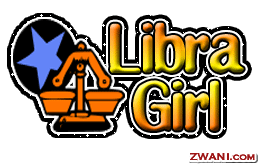
What are ICTs and what types of ICTs are commonly used in education?
ICTs stand for information and communication technologies and are defined, for the purposes of this
primer, as a diverse set of technological tools and resources used to communicate, and to create, disseminate,
store, and manage information.These technologies include computers, the Internet, broadcasting
technologies (radio and television), and telephony.
In recent years there has been a groundswell of interest in how computers and the Internet can best
be harnessed to improve the efficiency and effectiveness of education at all levels and in both formal
and non-formal settings. But ICTs are more than just these technologies; older technologies such as the
telephone, radio and television, although now given less attention, have a longer and richer history as
instructional tools. For instance, radio and television have for over forty years been used for open and
distance learning, although print remains the cheapest,most accessible and therefore most dominant
delivery mechanism in both developed and developing countries.The use of computers and the
Internet is still in its infancy in developing countries, if these are used at all, due to limited infrastructure and the attendant high costs of access.
Moreover, different technologies are typically used in combination rather than as the sole delivery mechanism.For instance,the Kothmale community Radio Internet uses both
radio broadcasts and
compu ter and Internet technologies to facilitate the sharing of information and provide educational
opportunities in a rural community in Sri Lanka. The Open University of the United Kingdom (UKOU),
established in 1969 as the first educational institution in the world wholly dedicated to open and distance
learning, still relies heavily on print-based materials supplemented by radio, television and, in
recent years, online programming.Similarly, the Indira Gandhi National Open University in India combines
the use of print, recorded audio and video, broadcast radio and television, and audioconferencing technologies.
How can ICTs help expand access to education?
ICTs are a potentially powerful tool for extending educational opportunities, both formal and non-formal,
to previously underserved constituencies—scattered and rural populations, groups traditionally
excluded from education due to cultural or social reasons such as ethnic minorities, girls and women,
persons with disabilities, and the elderly, as well as all others who for reasons of cost or because of time
constraints are unable to enroll on campus.
• Anytime, anywhere. One defining feature of ICTs is their ability to transcend time and space.
ICTs make possible asynchronous learning, or learning characterized by a time lag between the
delivery of instruction and its reception by learners.Online course materials, for example,may
be accessed 24 hours a day, 7 days a week. ICT-based educational delivery (e.g., educational programming
broadcast over radio or television) also dispenses with the need for all learners and
the instructor to be in one physical location. Additionally, certain types of ICTs, such as teleconferencing
technologies, enable instruction to be received simultaneously by multiple, geographically
dispersed learners (i.e., synchronous learning).
• Access to remote learning resources. Teachers and learners no longer have to rely solely on
printed books and other materials in physical media housed in libraries (and available in limited
quantities) for their educational needs. With the Internet and the World Wide Web, a wealth of
learning materials in almost every subject and in a variety of media can now be accessed from
anywhere at anytime of the day and by an unlimited number of people.This is particularly significant
for many schools in developing countries, and even some in developed countries, that
have limited and outdated library resources. ICTs also facilitate access to resource persons—
mentors, experts, researchers, professionals, business leaders, and peers—all over the world.
How have computers and the Internet been used for teaching and learning?
There are three general approaches to the instructional use of computers and the Internet, namely:
1) Learning about computers and the Internet, in which technological literacy is the end goal;
2) Learning with computers and the Internet, in which the technology facilitates learning across
the curriculum; and
3) Learning through computers and the Internet, integrating technological skills development
with curriculum applications.
What does it mean to learn about computers and the Internet?
Learning about computers and the Internet focuses on developing technological literacy. It typically
includes: • Fundamentals: basic terms, concepts and operations
• Fundamentals: basic terms, concepts and operations
• Use of the keyboard and mouse
• Use of productivity tools such as word processing, spreadsheets, data base and graphics programs
• Use of research and collaboration tools such as search engines and email
• Basic skills in using programming and authoring applications such as Logo or HyperStudio
• Developing an awareness of the social impact of technological change.
What about learning with computers and the Internet?
Learning with the technology means focusing on how the technology can be the means to learning
ends across the curriculum. It includes:
• Presentation, demonstration, and the manipulation of data using productivity tools
• Use of curriculum-specific applications types such as educational games, drill and practice, simulations, 
tutorials, virtual laboratories, visualizations and graphical representations of abstract
concepts,musical composition, and expert systems
• Use of information and resources on CD-ROM or online such as encyclopedia, interactive maps
and atlases, electronic journals and other references
Technological literacy is required for learning with technologies to be possible, implying a two-step
process in which students learn about the technologies before they can actually use them to learn.
However, there have been attempts to integrate the two approaches.
Sunday, September 21, 2008
iCt in eDuCati0N....
Posted by UmMuL at 1:08 AM
Subscribe to:
Post Comments (Atom)









0 comments:
Post a Comment